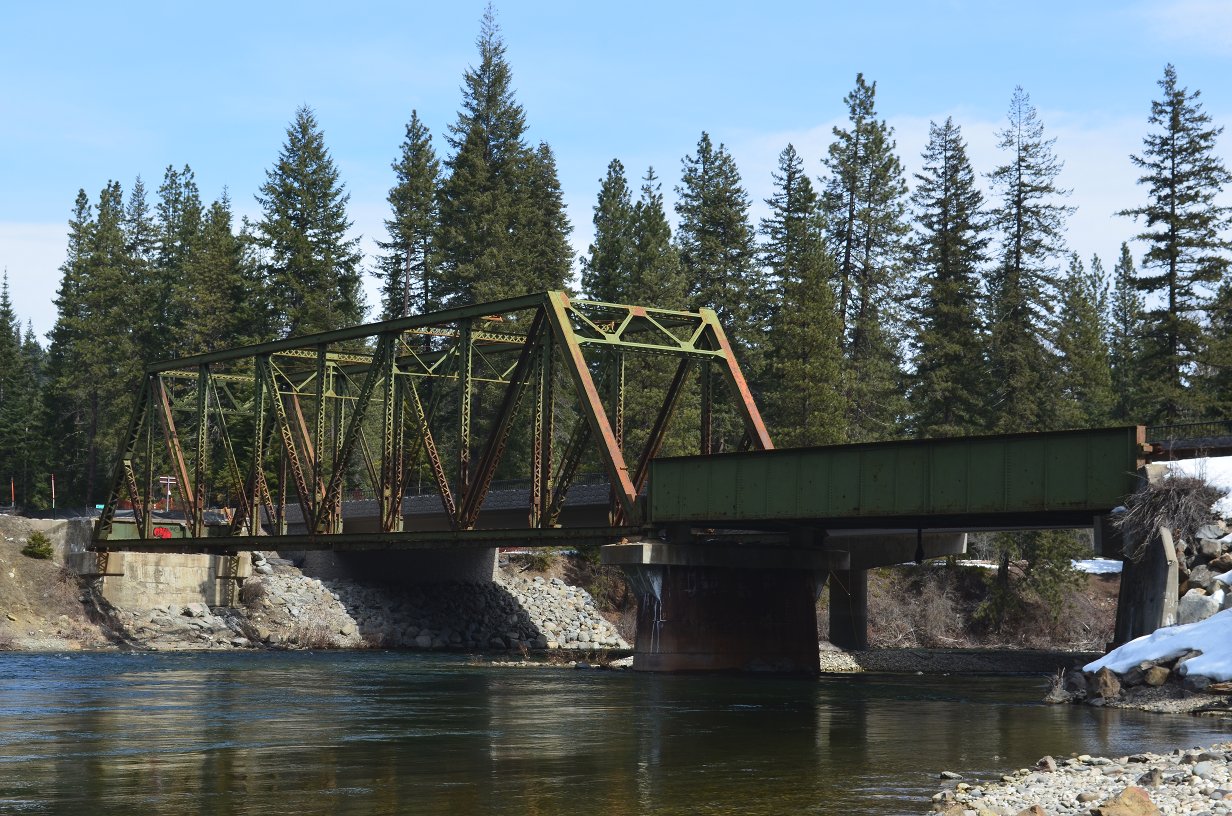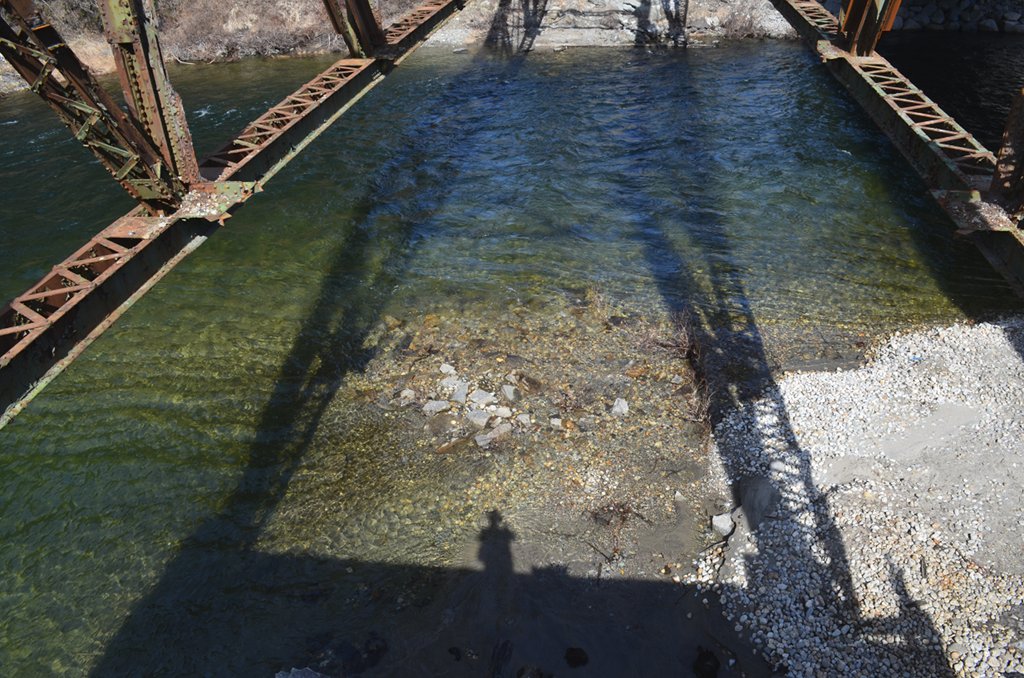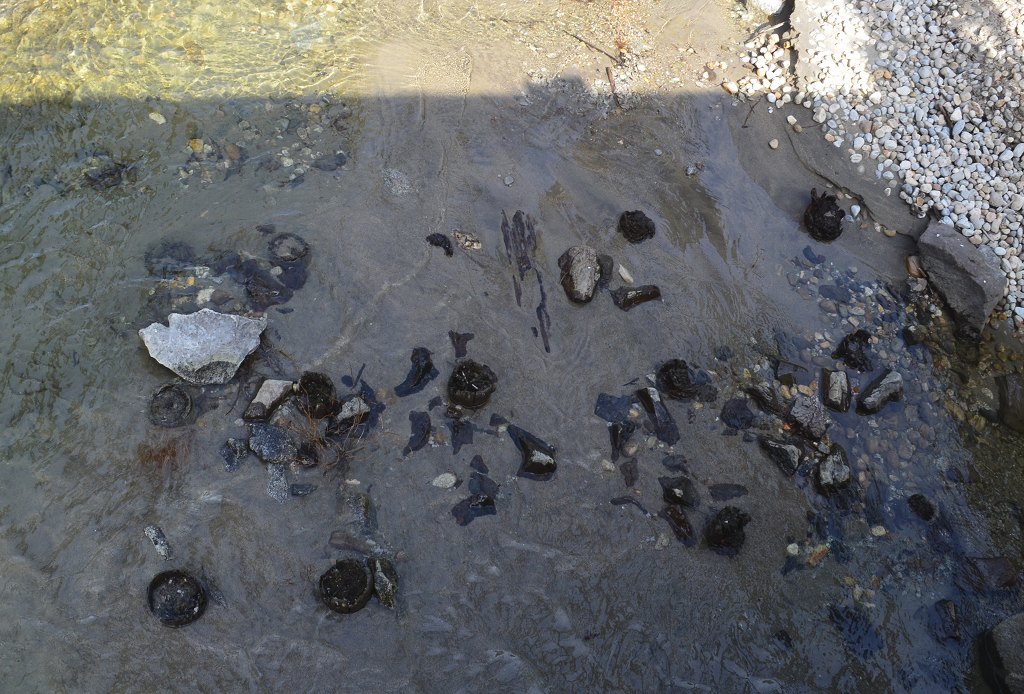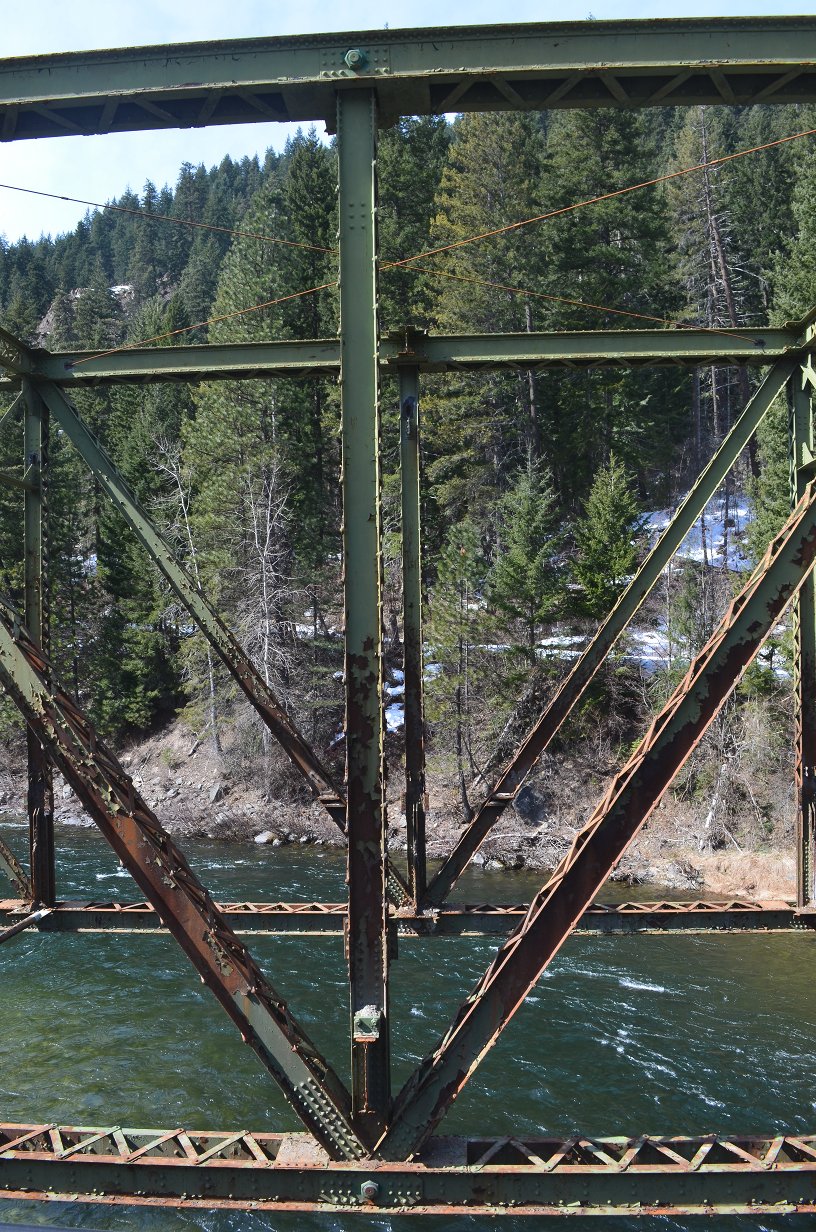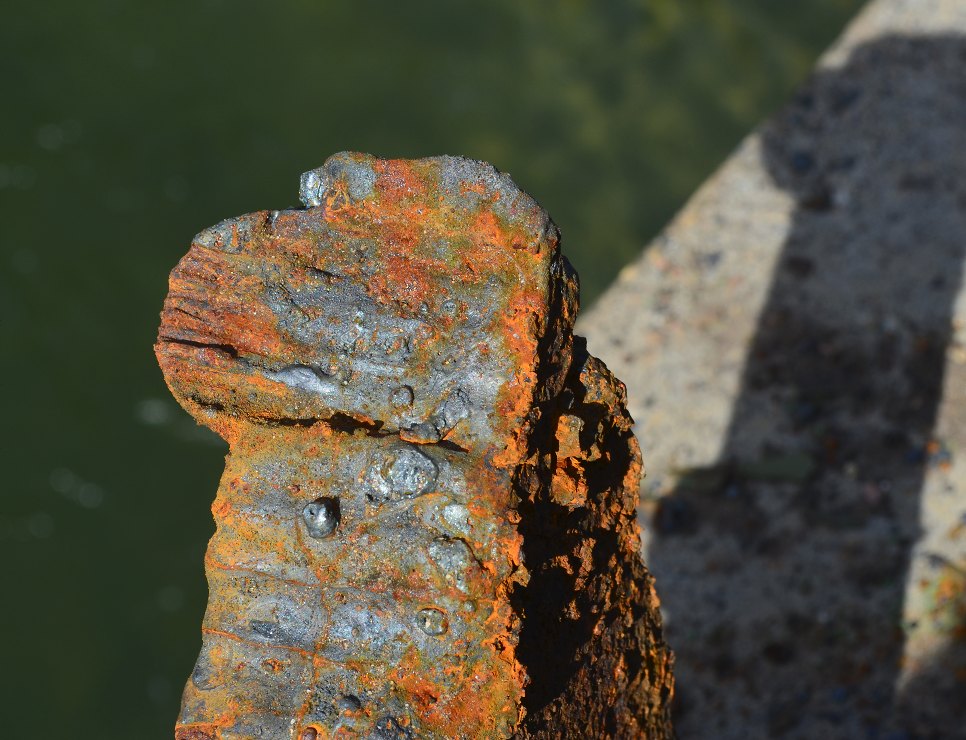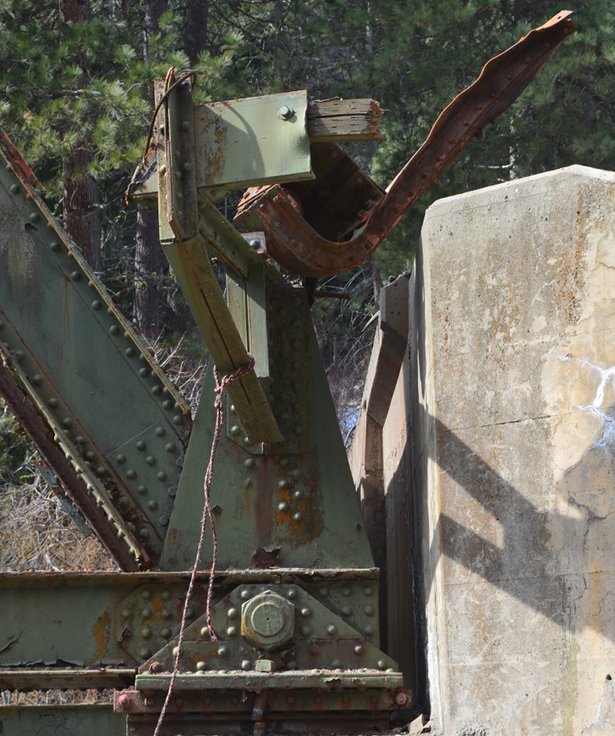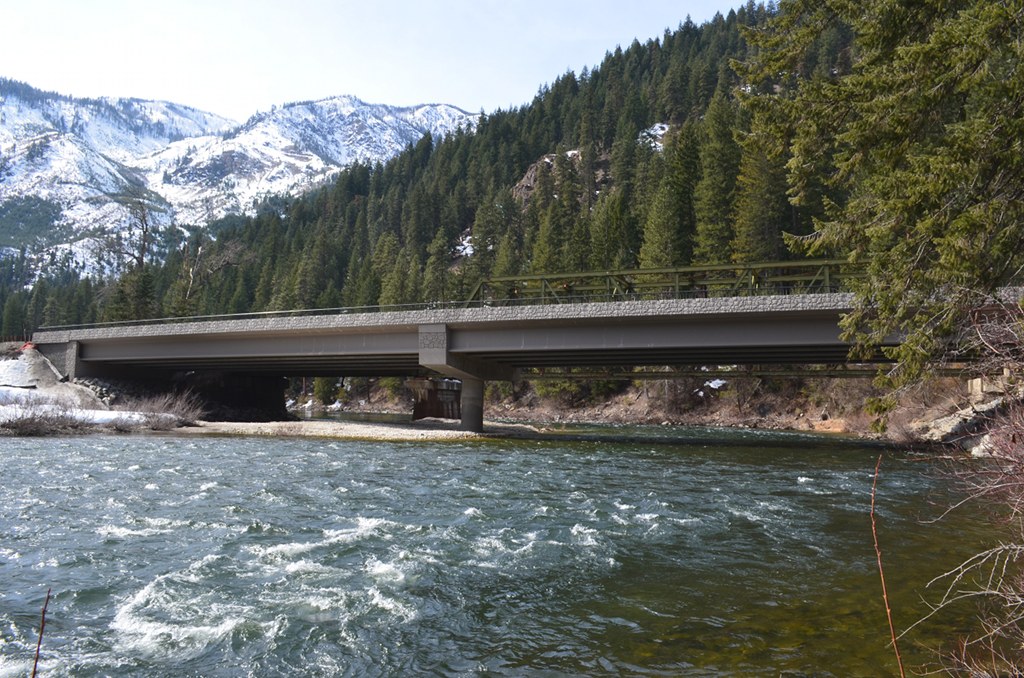Built:1900
Moved: 1936
Spans: 2
Demolition: Scheduled for 2014
Length: 263ft
Type: Steel through truss
Original use: Railroad
Original location: ?
Current location: Near US 2, Washington State,
milepost 90.57-90.62
Reason for listing: Confiscation of deck by WSDOT
The old Tumwater Canyon Bridge, also called the Green Bridge, crosses the Wenatchee River. Originally built as a railroad bridge, it was later moved and repurposed as a highway bridge. After over 100 years of service its deteriorating condition has caused the Washington State Department of Transportation (WSDOT) to replace it.
The demolition started in 2013 but is staged to avoid work during the winter months and during the fish spawning season. Demolition should be completed later in 2014.
While the author crossed this bridge in the past - back when it was in service - the removal of the deck renders a crossing unadvisable. Especially in a vehicle.
Physics students are required to calculate the optimum ramp height, angle and velocity for a vehicle to jump the missing deck segment. Don't forget the need for overhead clearance during the jump.
Below the old Green Bridge are the remains of large posts. It is not clear if these are part of a former bridge or something else.
Newer bridges, in which the support structure is normally below the deck, provide lots of advantages. For example, oversize loads can not easily damage the support structure. However, older through trusses allow people to more easily apperciate the bridge.
Note the single large bolt at the top and bottom of the vertical beam, presumable forming a pinned joint. The smaller connectors are structural rivets. These fasteners were once popular and effective, but have now fallen out of use. The primary reason is the labor cost of highly skilled workers required for installation. Another reason is that the relatively uncontrolled cooling process of setting a rivet results in suboptimal strength and hardness.
Cut away of a rivet
The remainder of a rivet was found left over from the demolition of the deck. Unfortunately, damage from the cutting torch results in only a poor view of the rivet and surrounding material.
Pinned Joint
At each end of the bridge are substantially larger pinned joints. It is not entirely clear if these joints fasten the bridge to the foundation, or if there is a way for the bridge to slide in an earthquake. It would make sense if there was a pinned joint on one side and a rocker on the other; but these large bolts were observed on both sides. Maybe this bridge is exceptionally earthquake unsafe? Earthquake design was not well understood when it was built. Or maybe there is room for slip somewhere in the mount below the bolt? The short span next to the truss had rocker joints, along with some newer earthquake retrofitting.
New Tumwater Bridge
For your safety and convenience, Scary Bridges recommends that, if you are in the area, you cross the new Tumwater Bridge. Given its proper design and good condition, it does not meet the low standards required for listing on this site and should be safe to cross.
More information on the Tumwater Bridge can be found on the WSDOT Project Page. More information on the challenges of maintaing US highway 2 in the area can be found in the WSDOT Tumwater Canyon Research.
© David C. Hunter, 2014
fb {at) scarybridges (dot] com


